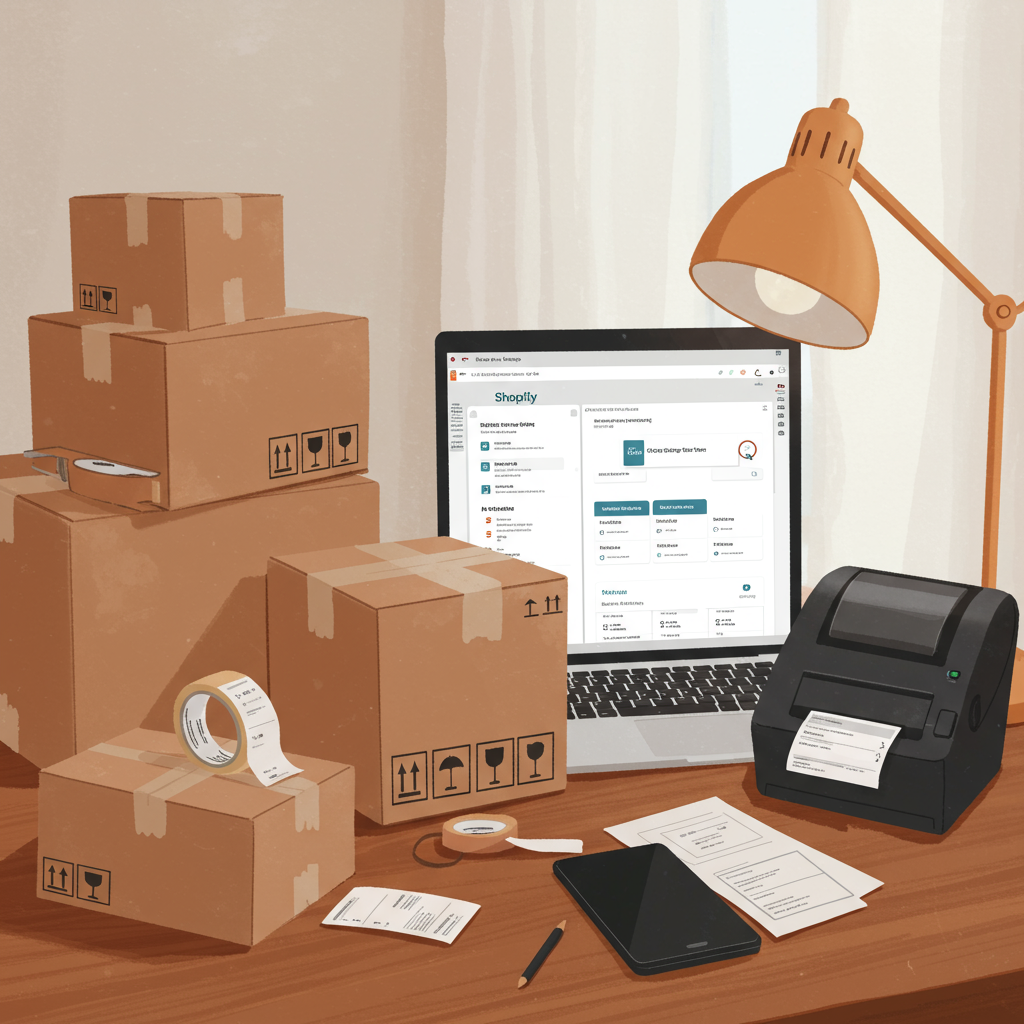Unlock the secrets to efficient, cost-effective, and customer-pleasing shipping for your Shopify store.
As a small business owner on Shopify, I know firsthand that shipping can feel like a daunting puzzle. It’s not just about getting a product from point A to point B; it’s a critical part of your customer’s experience and a significant factor in your profitability.
A well-thought-out shipping strategy can boost sales, build customer loyalty, and even differentiate you from competitors. Conversely, a poor one can lead to abandoned carts, negative reviews, and financial losses.
My goal with this article is to demystify Shopify shipping for you. I want to equip you with the knowledge and tools to create a strategy that works seamlessly for your business and delights your customers.
Let’s start with the absolute foundation: understanding your shipping costs. This is more complex than just the postage stamp.
You need to factor in carrier rates from services like USPS, UPS, FedEx, and DHL. These rates vary based on package weight, dimensions, destination, and the speed of service.
Beyond the carrier, consider your packaging materials. This includes boxes, mailers, bubble wrap, void fill, tape, and any custom branding elements like tissue paper or stickers.
Don’t forget about insurance for valuable items or tracking services, which are often included but sometimes an add-on. These small costs add up quickly.
Once you understand your costs, you can choose the right shipping options to offer your customers. This is where strategy truly comes into play.
Flat rate shipping is popular for its simplicity. You charge a single, fixed shipping fee regardless of the order size or destination. This works best if your products are similar in size and weight.
The allure of ‘free shipping’ is undeniable for customers. While it’s a powerful sales driver, remember that shipping is never truly free; you’re either absorbing the cost or building it into your product prices.
Calculated rates, often provided directly by Shopify’s integration with carriers, charge customers the exact shipping cost based on their location, the package’s weight, and dimensions. This is the most transparent option.
For local customers, offering local pickup or even local delivery can be a fantastic way to save on shipping costs and provide a personalized service. Shopify makes it easy to set these up.
Now, let’s talk about packaging. It’s not just about protecting your product; it’s an extension of your brand.
Invest in sturdy, appropriate packaging that minimizes damage during transit. Think about the unboxing experience – can you make it memorable with branded tissue paper or a thank-you note?
Consider eco-friendly packaging options. Many customers appreciate businesses that prioritize sustainability, and it can be a great selling point.
Next, we need to address fulfillment. How will orders actually get out the door?
In-house fulfillment means you handle everything yourself: picking, packing, and shipping. This gives you maximum control but requires significant time and space as your business grows.
Alternatively, you can use a Third-Party Logistics (3PL) provider. They store your inventory, pick, pack, and ship orders on your behalf. This can be a game-changer for scaling, though it comes with its own costs.
Shopify offers fantastic built-in tools to streamline your shipping process. Shopify Shipping provides discounted rates with major carriers and allows you to print labels directly from your admin.
Beyond Shopify’s native features, there’s a vast ecosystem of shipping apps in the Shopify App Store. These can offer advanced features like multi-carrier rate comparison, automated label printing, and sophisticated tracking.
If you plan to sell internationally, be prepared for added complexity. International shipping involves customs forms, duties, and taxes.
You’ll need to understand the import regulations of each country you ship to. Failing to do so can lead to delays, returned packages, or unexpected costs for your customers.
Clearly communicate your international shipping policies, including who is responsible for duties and taxes, to avoid customer frustration.
A clear and fair returns policy is just as crucial as your shipping policy. Make it easy for customers to understand and initiate returns.
Proactive communication is key. Send automated tracking updates so customers know exactly where their package is at every step of the journey.
Even with the best strategy, shipping issues can arise. Be prepared to handle lost packages, damaged goods, or delays with empathy and efficiency.
Your customer service around shipping can turn a potentially negative experience into a positive one, reinforcing trust in your brand.
Finally, remember that your shipping strategy isn’t set in stone. Regularly review your costs, carrier performance, and customer feedback.
Are your flat rates still accurate? Are customers complaining about shipping costs or delivery times? Use this data to make informed adjustments.
Continuously optimizing your shipping strategy will ensure it remains efficient, cost-effective, and aligned with your business goals and customer expectations.
What do you think about this article? I’d love to hear your thoughts and any shipping tips you’ve found helpful for your own Shopify store.






